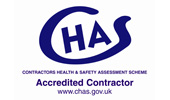Calcium Sulphate Screed
Calcium Sulphate Screed – The Flowing Choice
I’m Andy Parkin, Managing Director of the Multi-Award Winning Speed Screed.
Let’s talk about calcium sulphate screed. Calcium Sulphate is the name of the binder that is used in the screed. Traditionally, all screeds generally are cement-based. This one is an exception and uses calcium sulphate rather than cement.
Where Does Calcium Sulphate Screed Come From?
It is a by-product of the chemical industry in the UK. Rather than going to a landfill, it gets milled and then is made available to the screed industry.
What Are The Benefits Of Calcium Sulphate Screed?
It certainly has a number of benefits over cement and we will just go over a few:
Low-shrinkage
Anything with water in will shrink as it dries, however with calcium sulphate screed there is far less shrinkage. This is quite surprising as it is a liquid product in nature and it has a lot of water in mix so you would imagine the shrinkage is going to be greater than traditional sand and cement screed, however, that is not the case there is actually less shrinkage.
Less Risk Of Screed Cracking
Less shrinkage means that there is less chance of shrinkage cracking. It is not guaranteed that it will never crack, but there is less shrinkage.
Larger Bay Size
Due to the low shrinkage, you can have larger bay areas. The advantages of that are fewer screed cuts. With traditional screeds you would normally not go over a bay size of 40 square metres, that is assuming an aspect ratio of 2 to 1. Anything more elongated, anything where you’re putting restraints in there, then that figure has got to come down. The bay sizes with calcium sulphate screed in comparison are so much bigger.
Screed with underfloor heating and you would be looking at 300 square metres at a 2 to 1 aspect ratio, with no restraints. Without underfloor heating you’re actually looking at 1,000 square metres.
The implications for floor coverings and protection of those joints, are massive because if you are trying to work around those particular joints, the joints are weaker, there could be problems with the floor coverings joints matching up. You would take away a lot of the headache.
Quick Trafficking Of The Screed
How quickly can you actually traffic calcium sulphate screed? 24-48 hours is recommended. It will depend on site conditions, however, 90% of the time you can traffic after just 24 hours.
No Curling Of Lipping
Curling or lipping can occur in conventional cement-based screed, is if it is unbonded or a floating construction (on insulation). If you can imagine a slice of bread, and if you leave it in the open for a couple of days, it will start to dry out and the edges curl up (the top of the bread dries faster than the bottom). That is pretty much what happens with the screed. With calcium sulphate screed it is reassuring to know that it will not happen.
No Reinforcement Required
One thing that we sometimes do to minimise shrinkage cracking is to include reinforcement, but this is not required with calcium sulphate screed. The shrinkage is minimised anyway and reinforcing the screed to minimise shrinkage cracking is not needed.
Eco-friendly
Because the calcium sulphate screed is made with a recycled product, it is very eco-friendly. The carbon footprint of cement is actually massive, and so to have a product that can produce the same kind of results is something that is very desirable.
What kind of flexibility do you have?
With it being a liquid screed it means that it is always pumped in. You can pump a distance of 200 linear metres with a standard pump. If you are pumping vertically the distance will reduce.
The ready-mix truck mixer arrives, discharges into the pump. The pump then pumps through a worm screw fed system, it is the screw that is actually pushing the screed through the pipes to the area where the screed is to be laid.
Speed Of Placement
It is very flexible from the point of view if you have site constraints, you might be working in an inner-city, you haven’t got a lot of area, you might want to pull up on the road and literally discharge the screed very, very quickly. 20 cubic metres can be discharged from a typically screed pump in an hour.
Just to put that into perspective, a 6 cubic metres delivery of screed carried by 8 cubic metres ready-mix truck with a capacity of six metres normally when carrying calcium sulphate screed. The drum is at that angle, the screed will level itself, so if you end up going up a hill the screed comes out the back of the truck. An 8-metre truck will generally carry 6 for that reason.
6 cubic metres at a depth of 50 mm will actually give you a coverage of 120 square metres. You can discharge that in 20 minutes and complete a 6 cubic meter project within the hour.
Of course, it is all about preparation. When pouring all the preparation has to be laid to a high standard, insulation, membranes, and edging strips. The levels are suitable to give the required coverage, the datum’s need to be clearly marked, and then everything runs smoothly. It is all in preparation.
Greater Productivity
It is possible to lay 1,500-2,000 square metres in a day. It depends on the location of the screed supplier, and if they are able to service a project of that size.
Clean Site
The product is a clean product. When I say ‘clean’, from the perspective that you are not putting the product on the ground, it is coming in the truck mixer into the pump and delivered to the area where you are screeding. There is very little waste because you are generally ordering what you need specifically for the project.
There is going to be some washout/screed left at the end, and a waste area would be needed to pump this into.
Greater Thermal Conductivity
Finally, probably one of the biggest benefits of calcium sulphate screed has to be its thermal conductivity when used with underfloor heating which is nearly twice that of a traditional sand and cement screed. It is all about density. Air isn’t very thermally efficient, whereas a solid dense screed is very thermally conductivity.
Our Accreditations
About Speed Screed
Speed Screed Limited was founded on the key principle of providing first-class customer service. It has since built itself an impressive reputation for delivering high-quality projects across the United Kingdom.
The company’s success is built on its belief in quality work, attention to detail, on-time completion, strong working partnerships and the recruitment of top-level staff. about us >








